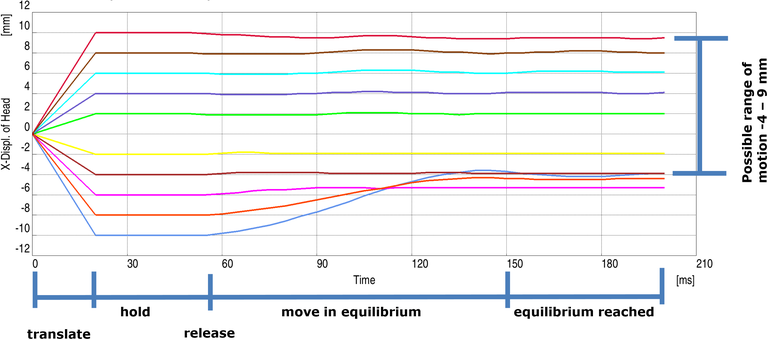Since BioRID2 v3.8 it is possible to adjust the head position with respect to the T1 vertebrae. This enhancement comes due to improvements of the cable friction in the BioRID2 v3.8.
To show the possible range of motion of the head. Negative displacement is forward and positive displacement is backwards.
The curves show different phases of head movement. At the end a possible range of motion is about 4mm forward and 9mm backwards.
Translate phase: Head is moved to a desired value in x-direction. In this position, it might be that the neck is not in equilibrium.
Hold phase: The head is hold in position so that dynamic effects are decreased to a minimum. This phase can also be chosen smaller than 30ms (about 10ms should be enough).
Release time: The head boundary are released at this time (see "Positioning File" to check how head is released). After this time the head can move freely in x-direction and y-rotation.
Move in equilibrium: In this phase the head moves on its own to an equilibrium between bumper forces, cable friction and spring forces.
Equilibrium reached: The equilibrium in the neck is reached and there is no more movement in the neck.
The head is positioned differently with respect to the T1 vertebrae. This state can be used then as new position of the head, but it is necessary after this simulation to update the spring forces to the new values psfront and psrear of the springs 10500 and 10501 to the new values.
It is also necessary after this simulation, to repair the seatbelt and slip ring definitions in the BioRID2 model. This can be done as described in "Repairing Seatbelt Elements".

